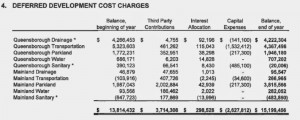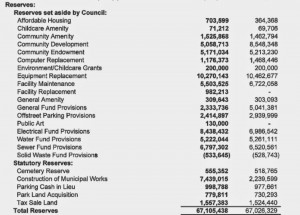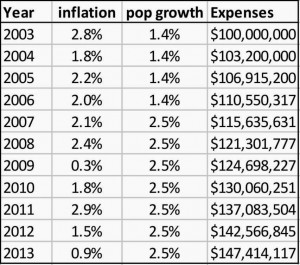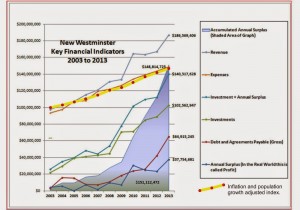Wow, we had a lot of work to do this week, but not until after a few proclamations were proclaimed.
We also, just before Council started, were given a grand tour of the New Westminster Hyack float (see above). The theme is a little cheeky, and the float has already won awards in spring Parades. I was also given a little background about the details of how a float operates. The New Westminster Hyack Float is actually electric, has a range of about 20km, and a top speed of about 35km/h. I was not, much to my chagrin, permitted to check it’s cornering. Anyway, this is an important reminder that Hyack week starts this weekend, with the Antique Sale and Anvil Battery Salute this weekend, the May Day dances on May 20th, and of course, the Parade and Uptown Street Fest on the 23rd.
After talking about airplanes with the previous Mayor, we received a presentation from Staff to update us on the process for the OCP, and the Visions and Goals developed through the first phase of public and stakeholder consultation. The report was great, and worth a look-through if you are at all interested in the Future of New Westminster.
A not-uncommon genre of complaint I hear is that the City is not managing growth appropriately. Although many are excited to see a more dynamic urban environment, others look at planned developments and say “what will happen with all the cars!?” or “how are we going to fit them all in the Library / Pool/ Community Centre” or “what does this mean for the character of my neighbourhood”?
The answers to those questions are in the OCP. We can, and will, plan to accommodate the growth, and can balance the need to accommodate people moving to the regions with protecting (or even enhancing) the livability of the places people live in today. But it takes careful planning, and community participation in that planning so we can understand what people are looking for when they say “livability” or “mobility” or “character”. The “Love Our City” event back in February brought a lot of good ideas forward, and started setting the table for what the community wants to look like in 25 years.
Because growth is going to happen. There are going to be a million more people in the Lower Mainland, and something like 30,000 of them are going to live in New Westminster. We cannot turn or back on that growth or prevent it, because we have agreed to a regional growth strategy with our Metro area neighbours, and because forcing those people to find a place to live in greenfields south and east of us will put unacceptable pressure on our ALR and employment lands, and will monumentally increase the tolls on our regional infrastructure (roads, sewers, water supply, etc.)
The rub here is how we accommodate growth in New West. To simplify, people seem to like (or at least accept) tower-oriented high density mixed use near SkyTrain Stations as the backbone of new urban development. We also have areas of New Westminster (Lower Sapperton, Queens Park, Massey Heights) where single-family detached will be the dominant land use for another generation at least, although opportunities do exist for “sensitive infill” like laneway houses, strata-dividing larger homes, or narrow-lot infill as long as the approach is diffuse and not to impactful on neighbourhood character.
The fun part is what happens in the middle. My neighbourhood of Brow of the Hill, Queensborough, Moody Park, and some other areas have already seem some moderate density increases, and may be ripe for more. The range that fits here would be wide, and where a lot of consultation may be needed: from duplexes to townhomes to fee-simple row homes and mixed commercial-residential buildings up to 6 stories. These types of developments can really add to the “street life” of commercial areas like 12th Street, bring more affordable family-sized options, while protecting a neighbourhood spirit where you know and trust your neighbours.
There is a lot more to come on this, and we should be looking forward to the Fall when all of the data collected up to here will be condensed into a few draft planning concepts – then we can really start to put a vision to New Westminster in 2041. Before that, watch this space, as there will be a public survey component to the current data, to see if you have ideas to improve it. Expect to see that out in the next week or two.
After these reports, we moved on to recommendations from the Committee of the Whole meeting from earlier in the day:
Council meeting schedule changes
We have been making adjustments to our Council Schedule, as there is an interest both with Staff and Council to have more “workshop” type meetings where we dig down into a project or issue at more detail and have a more complete discussion. Staff suggested we take three dates when Council is not scheduled to meet, and make those special workshop days. I have two problems with this.
First, I work for a living, and have had to make some accommodation with my employer to do my Council duties. We have an Annual Council Schedule, and I used that to work out the accommodation I need, and my employer has agreed to adjust to that (with unpaid time off). It is not fair to my employer for me to keep changing that schedule – they need certainty that I will remain a reliable employee. I am not the only person on Council who has a “real” job, and I shouldn’t be. Council does not pay enough to cover a mortgage in New Westminster, and I do not want to exclude working-age people in the making-a-living stage of life from serving on Council, so accommodation to our working schedules is really important in my opinion.
Second, these all-day workshop meetings take a lot of senior staff time. I do not want to take three more days from their already busy schedules to do these workshops. At least not until we have found a way to make our existing meetings as efficient as possible. There is a balance, of course, between having a meaningful and complete discussion, and running and efficient meeting. There are also two parts to that: the way reports are written to maximize the information and clarity of information, and the work that Council puts in preparing prior to a meeting so we are not reviewing information, but are enhancing our understanding to allow informed decision-making. We are a good team, Council and Staff, but we have some work to do to make our operation more efficient.
In the end, we compromised by adding a June 15th Workshop meeting, and asking Staff to recommend ways to improve the efficiency of our meetings or otherwise fit the other workshop topics into our existing schedule.
OCP Review, Draft Vision and Goals for OurCity 2041
We accepted the report from staff as discussed at some length above.
DP for 620 Salter Street
This is a development application for a 54-unit townhouse development on Salter Street in Queensborough. There will be an Opportunity to be Heard on this permit application on June 22, 2015. C’mon out and tell us what you think.
DP for 843 Ewen Ave
This is a development application for a 67-unit townhouse development on Ewen Avenue in Queensborough. There will be an Opportunity to be Heard on this permit application on June 22, 2015. C’mon out and tell us what you think.
DP for 188 Wood Street
This is a development application for a 65-unit townhouse development on Wood Street (the address used to be 702 Salter Street) in Queensborough. There will be an Opportunity to be Heard on this permit application on June 22, 2015. C’mon out and tell us what you think.
DP for 240 Jardine Street
This is a development application for a 34-unit townhouse development on Jardine Street in Queensborough. There will be an Opportunity to be Heard on this permit application on June 22, 2015. C’mon out and tell us what you think.
Editorializing Alert! Holy Cow. 4 separate developments in one week. 218 units averaging 1,330 square feet and including more than 600 bedrooms and 434 parking spots. 289,649 total square feet on 8.65 acres. Clearly, Queensborough is booming with the kind of family-oriented building that people on the elevated side of the river are clamouring for. What’s missing? Why are people in New West saying there are no affordable family homes being built? Is it one bridge too far? Not enough amenities nearby? Transit access? Lack of the urban feel? What has Queensborough got that the uphill neighbourhoods don’t?
New Westminster Healthier Community Partnership Committee
This was an update report on a Committee that was struck back in 2011 as a partnership between the City, the School District and Fraser Health. Recent actions include an agreement to integrate health goals in to the Official Community Plan, which is a bit of leading-edge as far as health policy for a City. You can read more about the goals of the Partnership at this link.
Council received the report for information.
Amendment to Bylaw Notice Enforcement Bylaw
This amendment coordinates the way several recent changes in various City bylaws interact with the bylaw that provides bylaw officers the legal ability to write tickets. Yeah, it seems kind of confusing that we need a ticketing bylaw that has to refer to every bylaw that refers to it, and it has to change when those bylaws do, but hey, no-one said government was simple.
Council referred this for three readings (see below).
2014 Filming Update
New Westminster is popular for filming, and it was rather fitting that this report came to council on a date when Tiperrary Park was filled with fog machines and period clothing as another film set day was occurring. 2014 was but down from 2013 (reflecting the volatility of the industry and the impact of a shifting Canadian Dollar on the market), but is up in 2015. The City charged film companies $313,000 in 2014 to work in the City, and it cost the City about $130,000 to provide services to accommodate that filming. The net profit to the City is modest in the scope of our annual $100M budget, but is a respectable return on investment.
More important to me, the negative impacts of filming on residents and businesses are being managed pretty well, and the positive economic impacts for local businesses (not to mention the sometimes-significant stipends paid to businesses and residents for the use of their property) are being felt across the City. New Westminster has great locations, but our great staff also helps make it a desirable place to film.
Electrical Utility Bylaw Amendment
The City has a bylaw that regulates its Electrical Utility. There are a couple of initiatives ramping up right now that have the potential to really expand the scope of the Utility – a potential district Energy Utility for the Sapperton/RCH area and the installation and operation of a dark fibre network to support the Intelligent City Initiative. Further, more of the Energy Save New West operation is involving the Electrical Utility, so the range and amount of work the electrical Commission will be required to do is going up. It was agreed by Council that a second representative be elected to the Commission to help spread the load.
The required bylaw change was referred to Council for three readings (see below).
Surrey Fraser Docks Amendment of Permit
As no-one could possibly have foreseen (/sarcasm), Fraser Surrey Docks is already looking to amend the permit they received from Port Metro Vancouver last year to introduce the import and trans-loading of thermal coal from the Powder River Basin in the US at their Surrey facility. They have not even started construction on the facility (as they are a little tied up with a couple of Metro Vancouver Permit snafus and a legal case), but they are asking to shift from loading barges to loading Panamax-sized ocean-going bulk carriers.
They are currently in the pre-application phase, meaning they are doing a bit of public outreach to decide if an application will go forward. If they go forward, they will need to update the human health and environmental risk reports, along with the marine traffic impacts and other studies, to reflect the new operation, then they will go through some level of stakeholder or public engagement.
Regardless, it is good to get your comments in early, as this phase of the public engagement ends on May 19th. Go to this web address and fill in the online form, e-mail your comments, or give them a phone call, They should hear from you, and reply to your concerns, after all, it is your back yard, and your climate.
Closure of the Pattullo Bridge Sidewalk
This was a concern brought to me by a constituent who commutes across the Pattullo Bridge on his bike to his job at Surrey Memorial Hospital on a regular basis. Signs went up recently announcing nighttime closures of the sidewalk for a month starting May 10th. I went to the TransLink website and saw no information about this closure (until this notice went up on May 10th), and it took City staff making some contact with TransLink to get some details.
The concern here is that the sidewalk is a vital transportation link for a lot of people, be they cyclists or pedestrians, and there are no ready replacements, especially at night when the Skytrain may not be running. Closures of a link with no ready alternative can by majorly disruptive, and putting a sign up a week beforehand is not optimum notice. Ideally, TransLink should be providing alternate means for those who rely on this crossing if the Sidewalk is going to be closed for a longer period of time.
I recognize that the works being proposed to repair the railing may be necessary, but there needs to be some recognition of the impacts on non-drivers when a vital link like this is closed. This relates not just to this project, but further repairs planned for the Pattullo in the coming months (at least according to their on-line tender documents) and, of course, eventual replacement if we get a YES vote. The Pattullo is not just a car bridge, but is a vital sustainable transportation link. If that link is not available for some time, TransLink really needs to come ot the plate with a plan to accommodate users.
Correspondence from DTRA
We also received correspondence form the Downtown Residents Association in regards to some specific and general traffic and safety concerns in their neighbourhood. I asked that Council direct these concerns to the Neighbourhood Traffic Advisory Committee and the Advisory Committee for Transit, Bicycles and Pedestrians so that they can review and send recommendations that Council may be able to act on.
Bylaws, Bylaws, Bylaws.
7749 2015 – Downtown BIA
This update of the BIA Parcel Tax saw three readings on April 27, and was adopted at this meeting. It’s now the Law of the Land.
7750 2015 – Downtown BIA – secondary area
This update of the BIA Parcel Tax for the other part of Downtown saw three readings on April 27, and was adopted at this meeting. It’s now the Law of the Land.
7748 2015 – Uptown BIA
This is an update of the BIA Parcel Tax for the Uptown BIA, which also saw three readings on April 27, and was adopted at this meeting. It’s now the Law of the Land.
7751 2015 – Tax Rates Bylaw
The bylaw that makes our tax increase for 2015 official saw three readings on April 27. Now that it has been adopted, it’s the Law of the Land.
7734 2015 and 7735 2015– HRA for 336 Agnes
As discussed back on the 30th of March, these are the Bylaws that support the HRA for renovation of Dontenwill Hall. Law of the Land, folks!
7761 2015 – Electrical Utility Commission Amendment Bylaw
As discussed above, this bylaw saw three readings.
7765 2015 – Bylaw Notice Enforcement Bylaw Amendment
As discussed above, this bylaw saw three readings.
And with that, we all went home.




